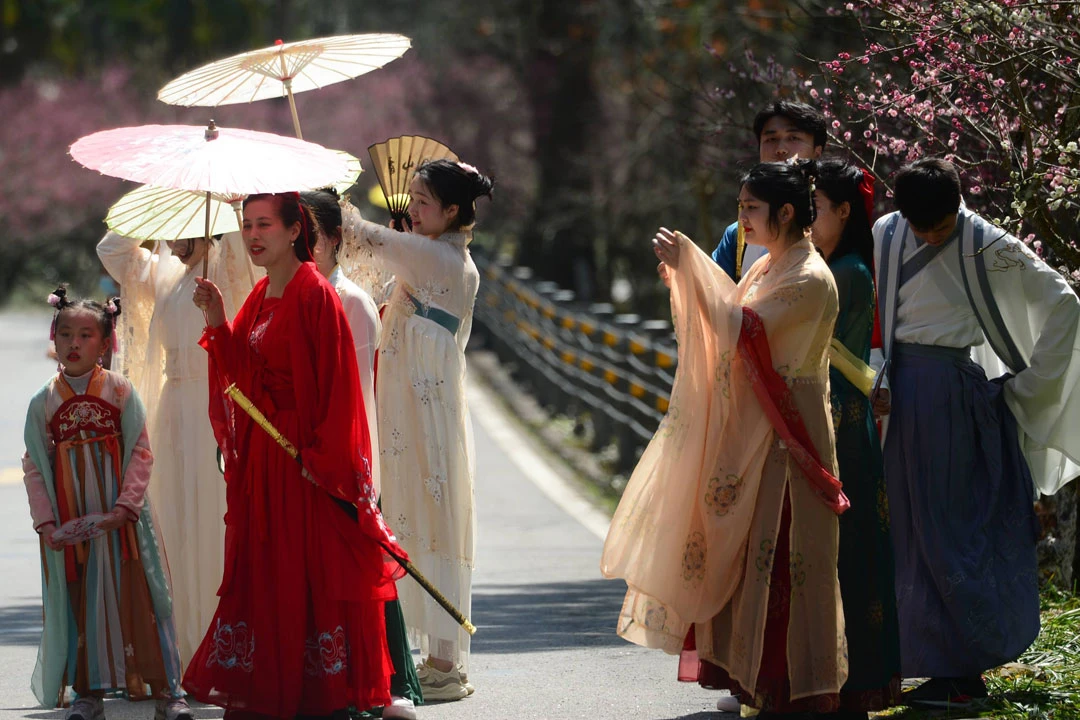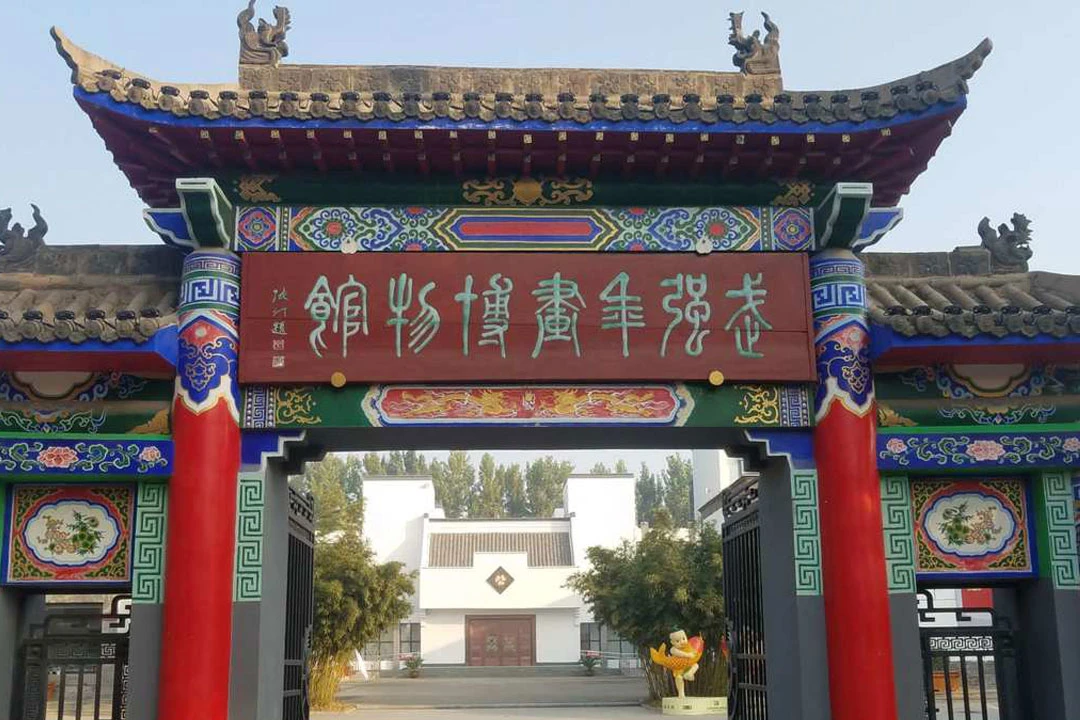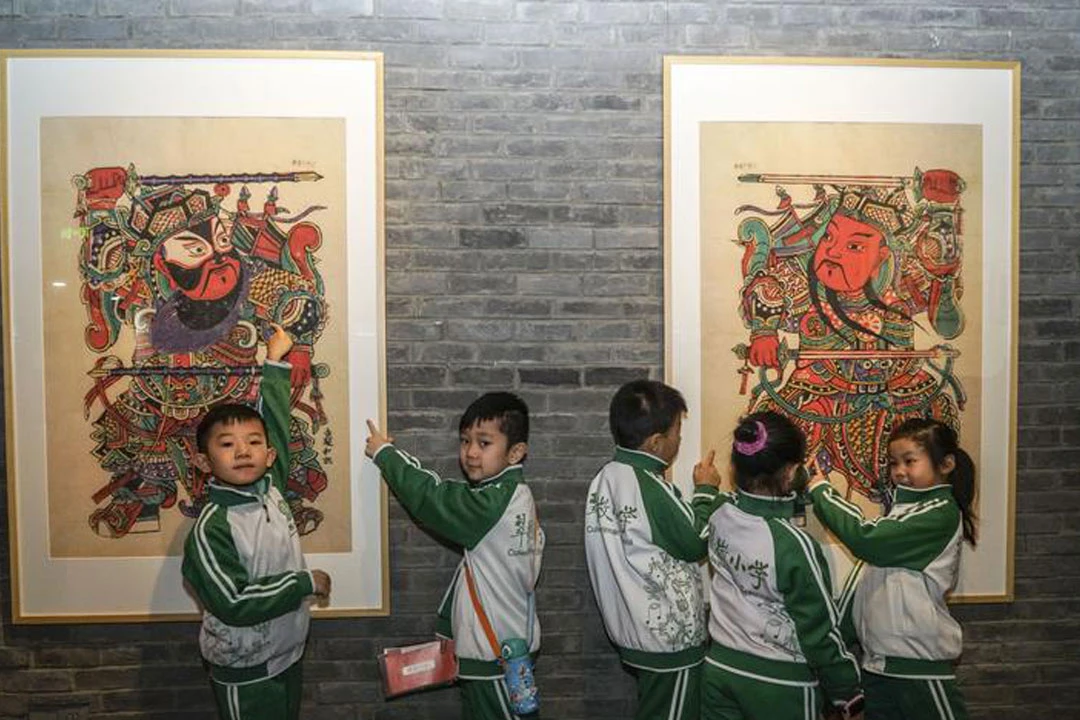In the quaint town of Wuqiang (武强), a remarkable fusion of art, tradition, and youthful enthusiasm is breathing new life into one of China's most cherished festivals. As the Qixi Festival (七夕), often referred to as Chinese Valentine's Day, approaches, the Wuqiang New Year Paintings Museum has transformed into a vibrant tapestry of color, poetry, and cultural heritage.

Ancient Love Story Comes Alive in Woodblock Prints
The museum's halls, typically silent guardians of centuries-old artistry, now echo with the excited chatter of visitors gathered around displays of intricate woodblock prints. These prints, known as nianhua, are more than mere decorations; they are windows into China's rich cultural past, and on this special day, they serve as storytellers for the timeless tale of Niulang (牛郎) and Zhinü (织女).
Among the most captivating pieces are "The Stove of Cowherd and Weaver Girl" and "Matching Across the Milky Way." These works, with their bold colors and meticulous details, bring to life the legendary lovers separated by the vast expanse of the night sky, allowed to meet only once a year on the seventh day of the seventh lunar month.
A museum docent, gesturing towards "The Stove of Cowherd and Weaver Girl," explains to a rapt audience, "This piece not only depicts the famous love story but also offers a glimpse into agricultural life and domestic scenes of ancient China. The stove, a central element in traditional homes, becomes a symbol of the warmth and unity the separated lovers yearn for."
The nianhua tradition, deeply rooted in folk culture, has long been a medium for preserving and transmitting cultural narratives. Beyond the romantic legend of Niulang and Zhinü, these prints also capture the Qixi customs practiced by young women, such as demonstrations of domestic skills and prayers for good fortune in love and marriage.
Young Ambassadors Bridge Past and Present in Hanfu
As visitors move through the exhibit, they're greeted by an unexpected sight: children and university student volunteers dressed in flowing hanfu, traditional Chinese clothing that has seen a revival in recent years. These young cultural ambassadors bring an air of living history to the museum, their presence a bridge between the ancient stories depicted in the artworks and the modern celebration of Qixi.
The event, themed "Ink and Color: A Five-Colored Orchid Night," features a series of performances that breathe life into the static displays. Preschoolers from local kindergartens, alongside elementary and university students, present folk custom demonstrations such as "Celebrating the Ox's Birthday," "Sunning Books and Clothes," and "Setting Up the Red Feast."
These vignettes, charming in their simplicity, offer insights into the agricultural roots of Chinese society and the domestic arts traditionally associated with women's roles. The ox, revered for its role in farming, takes center stage in one performance, highlighting the interconnectedness of love, labor, and cosmic cycles in Chinese culture.
The air fills with the lyrical cadences of classic poetry as young voices recite "Ancient Poems of Qixi," (七夕古诗) "Magpie Bridge Immortal," (鹊桥仙) and "The Skymarket." (天上的街市) These recitations, delivered with the unaffected enthusiasm of youth, serve as a powerful reminder of the enduring beauty of Chinese literature and its ability to capture the essence of human emotions across millennia.
Wuqiang's Museum: Where Art Preserves Cultural Heritage
Li Li, the director of the Wuqiang New Year Paintings Museum, beams with pride as she surveys the bustling scene. "By combining the Qixi Festival with Wuqiang's New Year paintings, we aim to highlight the cultural connotations of Qixi," she explains. "We want visitors to experience the romance of Qixi through these artworks, to inherit Chinese traditional culture, and to gain a unique festival experience while understanding our traditions."
The decision to host this event, co-organized with the Wuqiang County Committee of the Communist Youth League and the Wuqiang County Kindergarten, reflects a growing awareness of the importance of engaging younger generations in cultural preservation. By involving children and young adults in the celebration, the museum is cultivating a new generation of cultural stewards who will carry these traditions forward.
As the day progresses, the museum becomes a living canvas where past and present intermingle. Visitors of all ages, some in modern dress and others in hanfu, move from display to display, their conversations a blend of historical inquiry and personal reflection. The nianhua, with their vibrant depictions of love, labor, and cosmic harmony, serve as catalysts for discussions about the relevance of traditional values in contemporary society.
The event's success lies not just in its educational value but in its ability to make ancient customs feel immediate and relevant. As families gather around displays, grandparents find themselves explaining customs they remember from their youth to wide-eyed grandchildren. Young couples, inspired by the romantic imagery, can be seen whispering promises and exchanging knowing glances.
As the sun sets and the "Five-Colored Orchid Night" truly begins, the museum takes on an almost magical quality. Lanterns cast a warm glow over the exhibits, and the sound of traditional music drifts through the air. Visitors linger, reluctant to leave this enchanted space where time seems to have blurred, where ancient love stories feel as fresh and poignant as any modern romance.
In this moment, the Wuqiang New Year Paintings Museum has achieved something remarkable. It has transformed a repository of historical artifacts into a living, breathing celebration of cultural continuity. Through the vibrant colors of nianhua, the graceful movements of hanfu-clad performers, and the timeless words of classic poetry, visitors have been offered a multisensory journey through Chinese culture.
As the event draws to a close, it's clear that its impact will resonate far beyond this single day. Children leave with a newfound appreciation for their cultural heritage, young adults with a deeper understanding of the artistry that has shaped their nation's identity, and older visitors with renewed pride in the enduring beauty of Chinese traditions.
The success of this Qixi celebration at the Wuqiang New Year Paintings Museum serves as a powerful reminder of the vital role cultural institutions play in preserving and reimagining heritage. By finding innovative ways to engage with tradition, they ensure that the stories, values, and artistry of the past continue to inform and inspire future generations.
As the last visitors reluctantly make their way out, the nianhua settle back into their silent vigil, their colors as vivid as ever, ready to tell their stories again to the next group of eager listeners. In Wuqiang, for one magical night, art has truly come alive, and the spirit of Qixi—with all its romance, skill, and cosmic wonder—has been rekindled in the hearts of all who attended.


